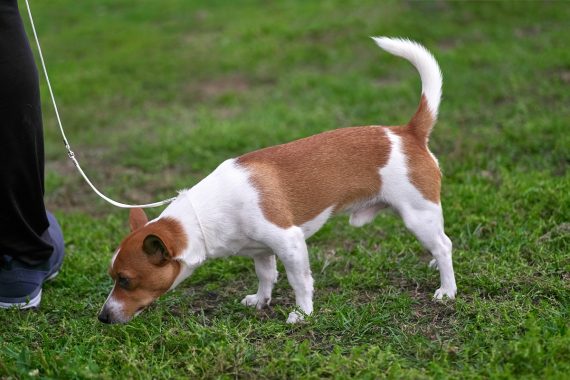Why you should let your dog sniff on their walks

When you take your dog out for a walk it can be frustrating and time-consuming when they stop to smell what seems to be every single item they come across, whether this is the grass, the path, a lamppost, flowers, bins, or other dogs. Although it can lead to a slower walk, these “scent walks” can be really beneficial for your dog.
When humans go for walks, they are mainly driven by sight. We explore our surroundings by looking at what is around us. Dogs work differently. Their dominant sense is their smell and they have millions more scent receptors than humans, meaning you should not underestimate the power of your dog’s nose.
Allowing your dog time to smell on their walks keeps them mentally stimulated and can reduce the chance of them becoming frustrated or bored. It can also relax them as well as tire them out. It is a simple thing you can let your dog do and some dog owners do not realise the benefits of it.
Dogs use their sense of smell not only to explore but also to communicate and make decisions. Because it is such an important tool for them, it is important that owners give them enough time to use it to explore their surroundings. The majority of a dog’s life is determined by its owner: when the dog is allowed to eat, when to play and when to go outside is all decided for them. Allowing them to smell on walks at their own pace gives your dog choices and an element of freedom.
If you are in a suitable area, allowing your dog briefly off their lead will allow them to enjoy this sense of freedom even more, although they can still enjoy the sense of freedom if they are on the lead.
You may notice your dog sniff other dogs when they pass each other. This is extremely common, especially sniffing another dog’s bottom. This exchange can almost be compared to the human equivalent of a handshake. It is a form of greeting where they get to know the dog and their distinct smell. Your dog may also sniff the ground, which can be an indication that they are showing the other dog that they are not a threat. Because of the clever way they use sniffing for communication, it is important you give them the opportunity to do this.
It is not only on their walks that you can encourage the sniffing behaviour. You can also let them forage for food in the garden. Scattering dry dog food in the grass and allowing them to hunt for the food is a low cost and effective way to offer them the stimulation required by allowing them to sniff out their food. If it is a rainy day or they are inside for a long period of time, there are snuffle mats you can buy that encourage the same behaviour.
Although you want to encourage sniffing, dogs would smell each individual thing they encounter if you let them. Try commanding your dog to sniff and then when they lose interest praise them for sniffing and continue your walk. Over time you can then use sniffing as a reward for good behaviour.
By understanding the importance of scents when you take your dog for a walk you can ensure that you can provide them stimulation both in terms of physical exercise but also mentally. Although we need to make walks fit into our busy lives, you also need to think about what types of walk will benefit your dog most. It is easy to assume a faster, shorter walk will be most efficient as it is easy to fit in and will tire your dog out quickly, however try and mix this up with longer, slower walks that allow your dog a sense of freedom to explore all their senses.
For advice on dog care, training, behaviour therapy and more, please visit our articles page which is full of free advice.